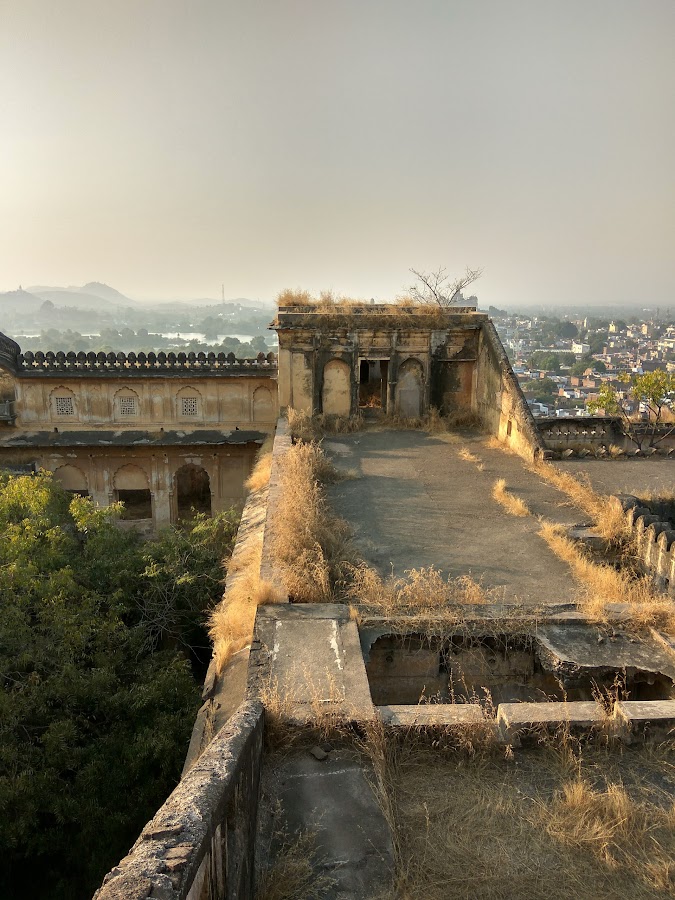
Rajgarh Palace
Datia, India
- Admire the intricate stone carvings
- Capture the panoramic views of Datia
- Discover the Bundela and Mughal architecture
- Explore the seven-story palace structure
- Learn about the palace's historical significance
Known for:
Description:
Rajgarh Palace, located in Datia, Madhya Pradesh, is a magnificent architectural marvel that offers a glimpse into the opulent lifestyle of the Bundela rulers. This seven-story palace, built primarily of stone and brick, is renowned for its intricate carvings, stunning murals, and elaborate jharokhas (overhanging enclosed balconies). Unlike typical palaces designed for residential use, Rajgarh Palace was conceived as a symbol of power and grandeur, showcasing the artistic and architectural prowess of the era. Visitors can explore the various levels, each offering unique perspectives and artistic details. The palace's strategic location provides panoramic views of the surrounding landscape, adding to its allure. A visit to Rajgarh Palace is a journey back in time, offering a captivating experience for history buffs and architecture enthusiasts alike.
History:
The Rajgarh Palace in Datia was commissioned by Raja Shatrujit Singh Deo in the 17th century. Uniquely, the palace was never actually inhabited by royalty. It served more as a symbolic representation of the kingdom's strength and artistic achievements rather than a residential space. The construction reflects a blend of Bundela and Mughal architectural styles, showcasing the cultural influences prevalent during that period. Over the centuries, the palace has witnessed various historical events and has stood as a silent observer of the changing times. Despite its age, the palace retains much of its original grandeur, offering valuable insights into the architectural and artistic sensibilities of the Bundela dynasty. Its design and purpose make it a distinctive landmark in the region's rich historical tapestry.